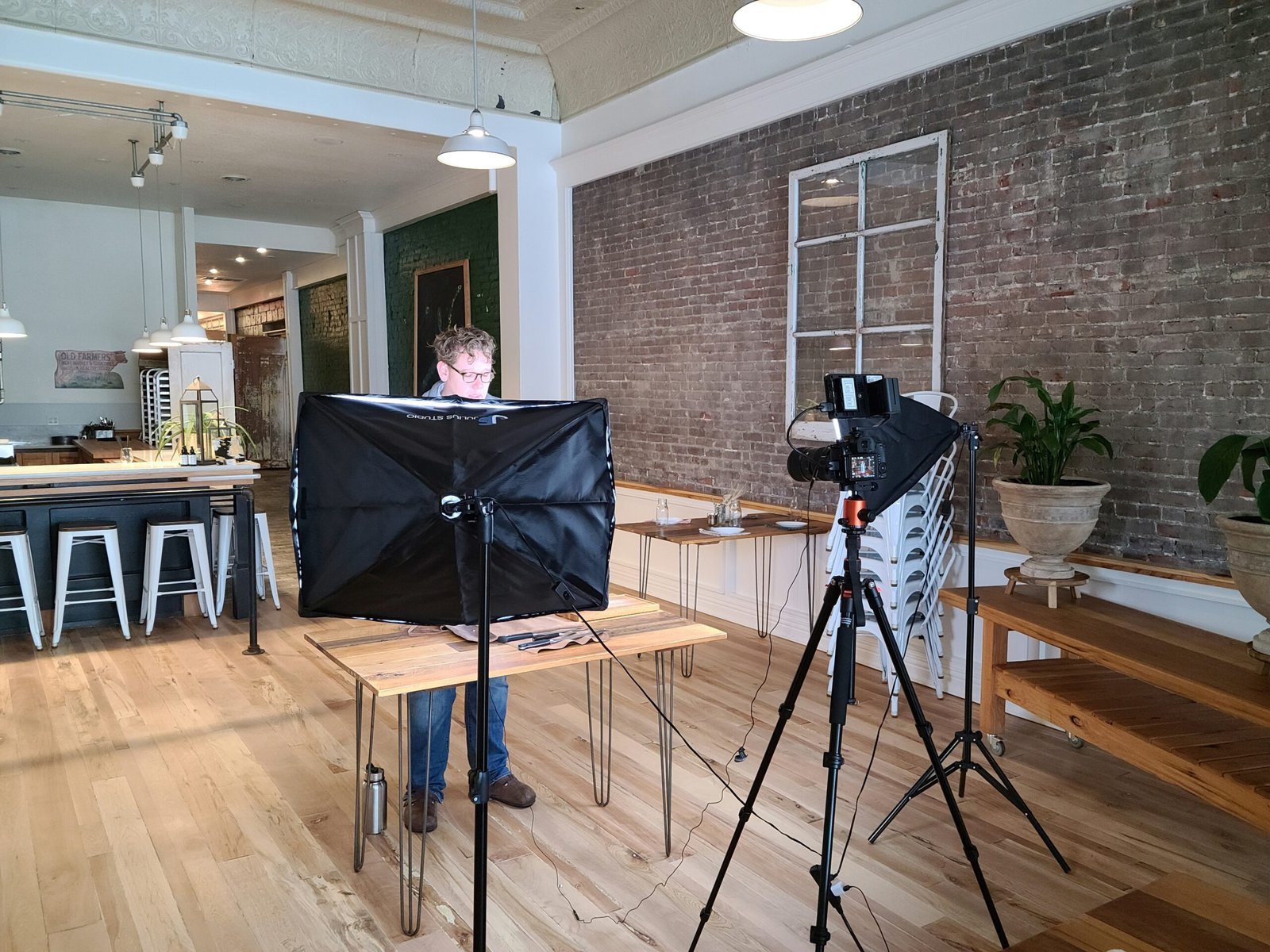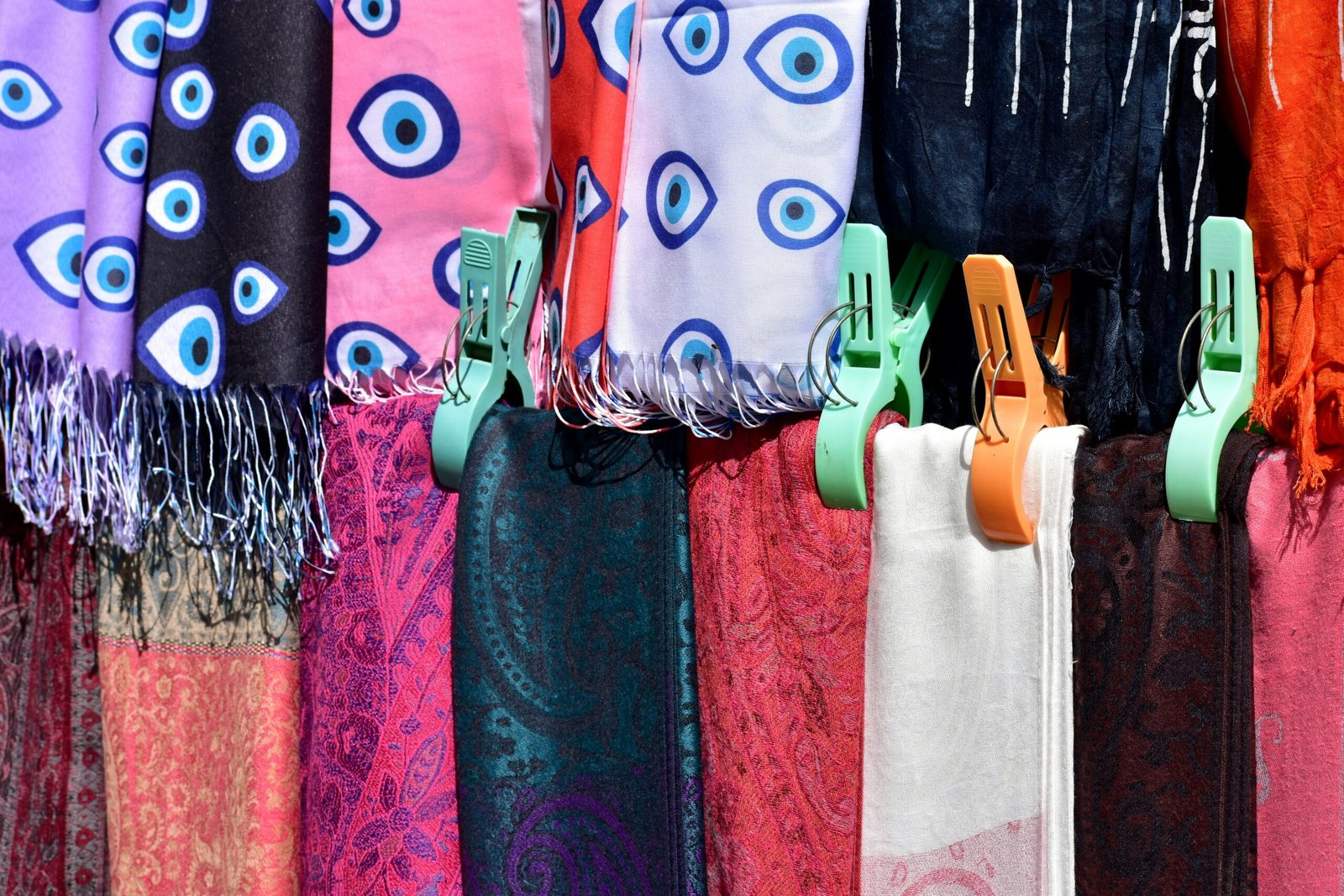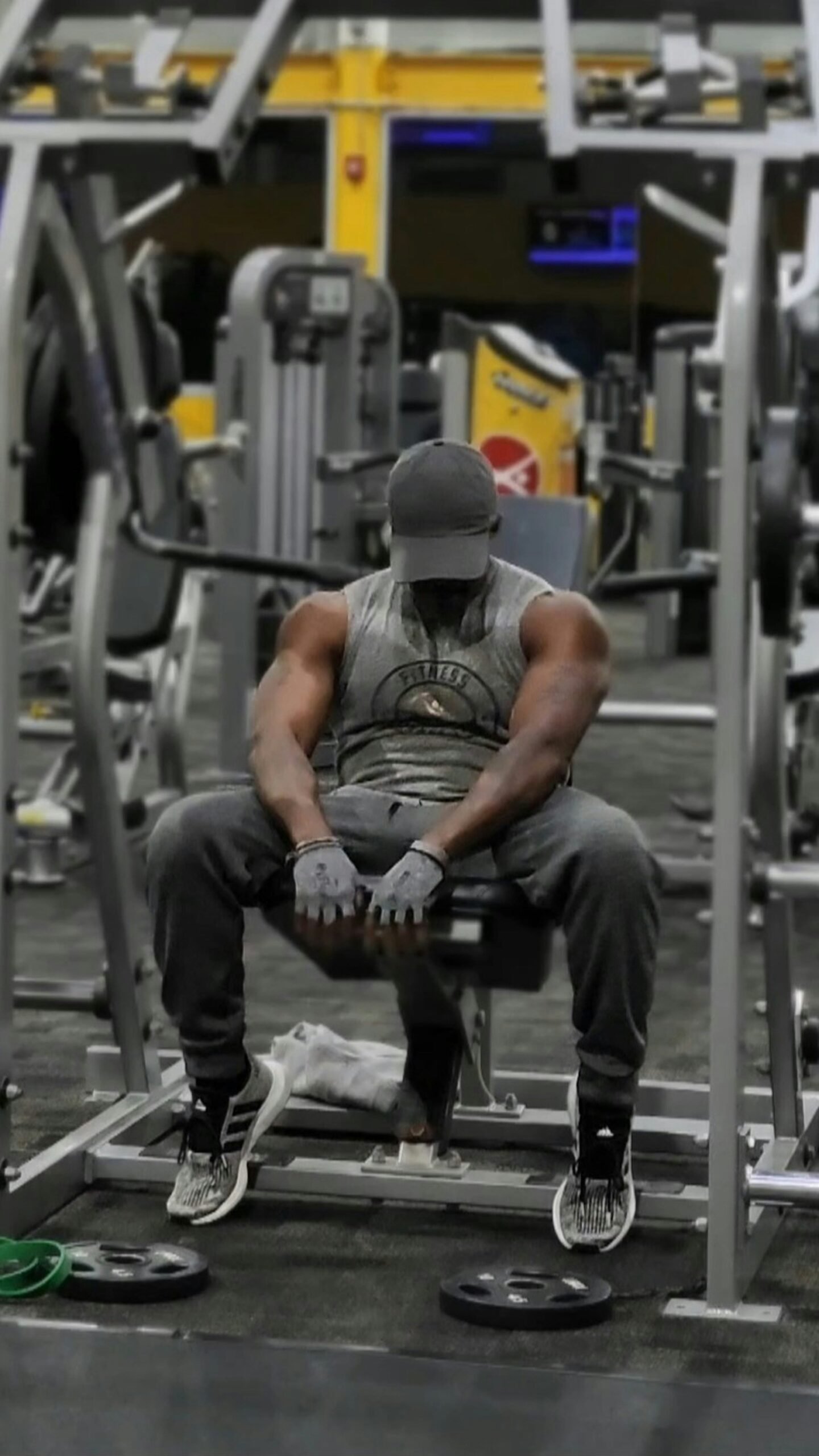
Introduction to Flea Markets
Flea markets are vibrant marketplaces that offer a diverse array of second-hand goods, antiques, handcrafted items, and unique collectibles. These markets have a rich history, originating from the ancient tradition of bazaars where both merchants and individual vendors gathered to sell their wares. Over the years, the concept evolved, giving rise to modern flea markets characterized by their eclectic mix of offerings and an inviting, community-oriented atmosphere.
The significance of flea markets in the contemporary shopping landscape cannot be overstated. They serve as an alternative to conventional retail outlets by providing shoppers with access to one-of-a-kind merchandise at affordable prices. In 2025, flea markets have garnered renewed interest as individuals seek distinctive items that reflect personal taste and style. Moreover, the experience of browsing through stalls and engaging with local artisans and collectors enhances the appeal of these markets, making them a favored destination for shoppers looking for something special.
As societal trends shift towards sustainability and conscious consumerism, flea markets play a pivotal role. They promote the reuse and recycling of items, thereby reducing waste and the demand for mass-produced goods. This aligns with the growing awareness of environmental issues among consumers, who are increasingly choosing to support local vendors and participate in a circular economy. The evolution of flea markets reflects these changing values; many now incorporate eco-friendly practices and emphasize the uniqueness of their offerings.
The allure of flea markets lies not only in their products but also in the cultural experience they provide. Shoppers in 2025 are not just looking for bargains; they are seeking stories behind the items they purchase, connecting them to a broader narrative of community and heritage. Thus, flea markets continue to thrive as essential hubs for sustainable shopping and creative expression.
What to Expect in 2025 Flea Markets
As we look ahead to 2025, the landscape of flea markets is anticipated to undergo notable transformations, shaped by consumer preferences and global influences. Shoppers can expect a diverse array of items at these markets, with a strong emphasis on vintage and handmade goods. The popularity of unique, one-of-a-kind products is likely to continue, as consumers seek personal touches over mass-produced items. Vintage clothing, antique furniture, and artisanal crafts will capture the attention of enthusiasts looking for authentic pieces with history.
Additionally, the rise of technology is set to play a significant role in the evolution of flea markets in 2025. Vendors may showcase an array of tech gadgets, including retro electronics and innovative tools designed for daily use. The integration of smart home devices and eco-friendly innovations could also emerge, reflecting broader trends in sustainability and technology adoption. This intersection of tradition and modernity will provide shoppers with a rich, varied selection.
The COVID-19 pandemic has undeniably influenced consumer behaviors and the operations of flea markets. A shift towards outdoor markets is expected to remain, as shoppers tend to favor open-air environments that promote safety. Hygiene protocols implemented during the pandemic, such as vendor cleanliness and social distancing measures, may evolve into permanent fixtures that enhance overall shopping experiences. As we move into 2025, these adjustments will likely become a standard part of flea market culture, reassuring visitors of their health and safety.
Overall, flea markets in 2025 are poised to thrive as vibrant hubs of commerce that cater to diverse tastes. Expect the blend of vintage charm, modern technology, and a commitment to safety, ultimately enriching the shopping experience for all. This dynamic environment will likely attract a wide demographic, from seasoned collectors to casual browsers, enhancing the appeal and success of flea markets in the coming years.
Tips for Successful Flea Market Shopping
Flea markets offer a unique shopping experience, combining the thrill of treasure hunting with the opportunity to discover a variety of products at competitive prices. To maximize your experience, it is essential to approach flea market shopping with a strategic mindset. Below are several practical tips for navigating these vibrant marketplaces effectively.
First, research the markets you plan to visit. Many flea markets have specific themes or focus areas, whether it’s vintage items, handmade crafts, or antiques. Look for reviews online, visit social media pages, or join local community groups to gather insights about the market’s reputation and the types of vendors present. Knowing what to expect can help you better prepare for what you will find.
When deciding what to wear, aim for comfort and practicality. Dressing in layers allows you to adapt to changes in weather, while comfortable shoes are essential for walking extensively. As many flea markets are held outdoors, be prepared for a mix of terrains. Additionally, it is advisable to bring reusable shopping bags that are easy to carry and environmentally friendly.
Haggling is a common practice at flea markets, but it must be approached with respect. Start by engaging the vendor in conversation; show genuine interest in their items. When discussing prices, be polite and reasonable. A good rule of thumb is to suggest a price that reflects quality and rarity, while also considering the vendor’s efforts to price their items fairly. This not only establishes a rapport but can also lead to more favorable deals.
Finally, keep an eye out for hidden gems. Many flea markets contain a fantastic range of merchandise, and the best deals can sometimes be found in unexpected stalls. Take your time while browsing, and do not hesitate to revisit vendors if you have questions about items or pricing. By employing these strategies, you will enhance your flea market shopping experience and may leave with truly memorable finds.
Flea Market Must-Have Items in 2025
As flea markets continue to evolve with shifting consumer preferences, certain categories of items are emerging as must-haves for shoppers in 2025. Among the most sought-after are vintage clothing, which offers a unique blend of nostalgia and style. With a focus on sustainability, vintage apparel not only makes a fashion statement but also promotes eco-consciousness. Look for items like 90s graphic tees, oversized denim jackets, and classic bands’ merchandise, as these pieces are often in high demand and can be resold at a profit.
Additionally, vintage furniture remains a staple at flea markets, attracting both collectors and interior design enthusiasts. Mid-century modern pieces, particularly wooden side tables, Scandinavian designs, and industrial-style furniture, are highly coveted. Assess value by checking for manufacturer tags, unique craftsmanship, and overall condition. High-quality vintage items often tell a story, making them not only decorative but also meaningful additions to a home.
In the realm of electronics, retro gadgets are creating quite a buzz. Items like vinyl record players, vintage cameras, and classic gaming consoles are experiencing a revival. When shopping for retro electronics, examine the item’s functionality, as well as any accompanying accessories that may enhance its value. Collectors often seek out items in working condition, so conducting a brief test when possible is advantageous.
Moreover, eco-friendly products are gaining traction among conscious consumers at flea markets. Reusable shopping bags, upcycled home decor, and sustainably produced household items are increasingly desirable. Shoppers should look for products that highlight sustainable practices, such as bioplastics or ethically sourced materials, to ensure they are making socially responsible choices.
These categories reflect not only current trends but also enduring interests among flea market shoppers. By focusing on these must-have items, shoppers can enhance their experience and perhaps even discover hidden gems that are both practical and collectible.
Spotlight on Popular Flea Markets
Flea markets have long been a favorite destination for treasure hunters, vintage enthusiasts, and bargain shoppers alike. In 2025, several flea markets around the globe stand out due to their unique offerings and vibrant atmospheres. This overview will highlight some of the most popular flea markets, shedding light on their locations, operating hours, and defining traits.
One of the most celebrated flea markets is the Brooklyn Flea in New York City. Renowned for its eclectic mix of vintage fashion, handmade crafts, and artisanal food stalls, Brooklyn Flea operates every Saturday and Sunday from 10 a.m. to 5 p.m. As vendor Sarah Thompson describes, “The market is a melting pot of creativity and entrepreneurship. Every week, we come together to share our passion with the community.” This market has become a cultural hub, showcasing local talent and fostering connections among visitors.
Across the Atlantic, Portobello Road Market in London remains a must-visit destination. Open Monday through Saturday, this vibrant market offers everything from antiques to street food, with Saturday being its busiest day. Vendor Mark Ellis emphasizes the historical significance of the market: “You can find treasures dating back decades. It’s not just about shopping; it’s about history.” This rich tradition attracts tourists and locals alike, reinforcing Portobello Road as a premier shopping experience.
In Asia, the Chatuchak Weekend Market in Bangkok is recognized as one of the largest flea markets worldwide. Operating on Saturdays and Sundays from 9 a.m. to 6 p.m., it features over 15,000 stalls selling a myriad of goods, ranging from clothing to home décor. Local vendor Anya Wong notes, “Chatuchak is all about the thrill of discovery. You never know what you might find.” This essence of surprise keeps shoppers returning, making it a staple for both locals and tourists.
These flea markets exemplify the diversity and creativity found in this marketplace culture. As they continue to evolve, they maintain their charm, attracting visitors who appreciate unique finds and the stories behind each vendor.
Navigating the Flea Market Landscape: Online vs. In-Person
Flea markets have long been celebrated as treasure troves for collectors and bargain hunters alike. With the advent of technology, the traditional experience of browsing through stalls has expanded to include online platforms, creating a dynamic shopping environment. This section delineates the experiences of shopping at physical flea markets versus their online counterparts, highlighting their respective advantages and disadvantages.
One of the primary benefits of in-person flea markets is the sensory experience they provide. Shoppers can touch, see, and sometimes smell items firsthand, creating a deeper connection with their potential purchases. The ability to interact with vendors can also enhance this experience, as buyers often glean valuable insights about items, such as their history, usage, and condition. Additionally, haggling for prices in person adds an element of excitement and engagement that is difficult to replicate online.
Conversely, online flea markets offer remarkable convenience. The ability to browse a vast array of items from the comfort of one’s own home allows for greater flexibility, especially for those who are unable to visit physical locations due to distance or mobility issues. Online platforms are available 24/7, which means shoppers can hunt for deals at any time. Moreover, the COVID-19 pandemic has accelerated the growth of online flea markets, making them a vital outlet for both buyers and sellers who may have been reluctant to gather in large crowds. These platforms often feature user reviews and detailed item descriptions, assisting shoppers in making informed decisions.
However, online shopping lacks the tactile and interactive elements found at in-person markets. While photographs provide visual representation, they may not accurately reflect the item’s actual condition. Furthermore, shipping times and costs can deter some buyers who prefer the immediacy of purchasing an item in person. Both shopping formats have their unique attributes, and understanding these differences assists shoppers in determining which best meets their needs.
Environmental Impact of Flea Markets
Flea markets represent a vital component of sustainable shopping practices, fostering a circular economy by facilitating the resale of goods. This system not only extends the lifespan of products but also diminishes the need for new manufacturing, which is often resource-intensive and contributes to environmental degradation. By purchasing pre-loved items at flea markets, consumers actively participate in reducing waste, contributing to a significant decrease in overall consumer demand for new goods.
Moreover, flea markets inherently promote the recycling and repurposing of various items, including clothing, furniture, and collectibles. Such practices are integral to minimizing landfill contributions, as many items that might otherwise be discarded are given a second chance at life. This shift towards second-hand shopping not only alleviates pressure on natural resources but also lowers carbon emissions associated with the production and transportation of new merchandise.
With an increasing awareness of consumer impact on the environment, flea markets provide an accessible platform for individuals to make eco-conscious purchasing decisions. By opting for second-hand goods, shoppers can lower their carbon footprint and support local economies, often retaining more of their financial resources. Furthermore, many flea market vendors prioritize environmentally friendly practices, such as using biodegradable packaging or sourcing products from sustainable origins, which aligns with an ethical consumption philosophy.
In the context of 2025, the role of flea markets in promoting sustainable lifestyles is expected to expand, with more individuals recognizing their potential in helping drive eco-friendly trends. As the movement towards reducing waste grows, the importance of flea markets as venues for responsible consumption becomes increasingly clear. Engaging with these community-driven spaces not only benefits consumers but also has a profound positive impact on the environment.
FAQs About Flea Market Shopping
Flea markets offer a unique shopping experience that draws both seasoned shoppers and newcomers alike. As the popularity of these markets rises, many individuals have questions about various aspects of flea market shopping. Below are some frequently asked questions that can help facilitate a smoother experience.
1. Should I bring cash or can I use a credit card? While some vendors may accept credit or debit cards, the majority of flea market vendors prefer cash. This is often due to the fees associated with card transactions. Moreover, having cash on hand can make negotiations easier, as vendors might be more willing to offer discounts for cash transactions. It is advisable to withdraw a reasonable amount of cash before attending the market to avoid issues with card acceptance.
2. How do I negotiate prices with vendors? Negotiation is a common practice at flea markets. When approaching a vendor, start by expressing interest in the item, and then ask if the price is flexible. Begin by offering a lower price than what is listed, but ensure that it is reasonable. Respectful negotiation can result in mutually beneficial agreements, so it is important to remain polite and open to discussion.
3. What are some general etiquette tips to follow? Flea markets can be bustling environments, and etiquette plays a key role in ensuring a positive experience for everyone involved. Always respect personal space, avoid blocking pathways, and handle items carefully. If you are not interested in a product, simply say “Thank you” and move on. Furthermore, engaging in conversation with vendors can enhance your shopping experience and foster a friendly atmosphere.
4. Are there safety tips to consider when shopping? Safety should always be a priority when visiting a flea market. It is advisable to travel with friends or family whenever possible, particularly in crowded venues. Keep an eye on personal belongings, as crowded areas can attract pickpockets. Finally, always be vigilant about your surroundings to ensure a safe shopping experience.
The Flea Market Experience Awaits
As we conclude this exploration of flea market shopping in 2025, it is essential to reflect on the unique opportunities these vibrant markets present. The allure of flea markets lies not only in the diverse array of products and treasures available but also in the charm of the shopping experience itself. From vintage collectibles to handcrafted goods, every visit promises surprises that can enrich your life. This guide has highlighted various aspects of effective shopping at flea markets, including tips for negotiation, understanding market trends, and recognizing high-quality items.
Moreover, we have discussed the current trends reshaping the flea market scene, emphasizing their growing popularity due to sustainability and local craftsmanship. As consumers strive for unique and environmentally friendly alternatives to mass-produced items, flea markets serve as a perfect haven for such shoppers. Engaging with local vendors and artisans not only supports the community but also creates a rewarding shopping experience enriched by stories behind each product.
Embracing the adventure of flea market shopping in 2025 means being open to exploring the unexpected. Whether you are a seasoned collector or a casual shopper, each visit can turn into a memorable journey. We encourage you to take the plunge, visit your local markets, and discover your unique finds.
We invite you to share your own flea market experiences or insights with our community. Engaging with fellow enthusiasts can inspire further exploration and enhance your ability to navigate future flea markets effectively. Join the conversation, and let the adventure of flea market shopping unfold for you!





